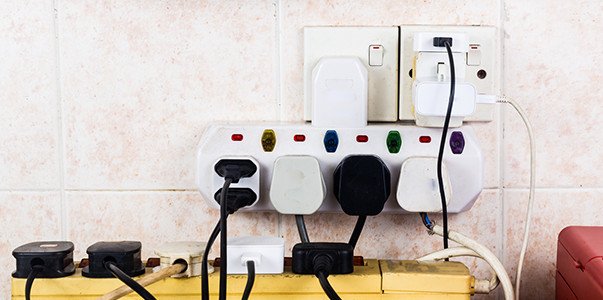Money Saving Tips
Three Prongs Superior, Two Prongs Inferior
By Green Home Electric
When it comes to the guidance of electrical safety, it is not advised to saw the third prong off of an electrical plug to adapt with a two-prong outlet. However, a lot of people are not aware of its severe danger.
Every outlet includes two wires (a hot wire and a neutral wire). The main difference between a two-prong outlet and a three-prong outlet is that a three-prong outlet has a ground wire which is a safe place for unforeseen bursts of current to go when they arise, whereas a two-prong outlet doesn’t. If there is no connection between the ground wire and the plug, wild current can flow anywhere into other electrical equipment, likely leading to unpredictable electric shocks.


Moving On Up
In North American homes, three-prong outlets are no longer used in the late 1960s. Therefore, while state-of-the-art homes keep up with modern three-prong sockets, there are a lot of houses with outdated two-prong ones.
Adapters that convert two-prong sockets to compatible with three-prong plugs may seem like a quick and convenient fix. However, you definitely halt employing these cheater plugs in order to avoid potentially unexpected hazards.
Although two-prong outlets used to be the standard in older homes, they are now considered outdated and dangerous. Therefore, you should make a decision to install three-prong sockets. In addition, regular maintenance of three-prong plugs should be carried out to ensure whether they work effectively or not.
There are two recommendations to upgrade two-prong sockets. The best suggestion is to have ground wires set up with the aim of making sure the adequate standard of the outlets. Nevertheless, the disadvantage of this option is that it takes several hours of electrical service and requires cutting into walls. It may be a tough task, but it is beneficial to the safety of your home.
A cheaper measure is to install a ground fault circuit interrupter outlet or GFCI. With the function of shutting themselves off, these outlets can diminish electrocution although they do not keep ineffective sensitive electronics from sudden damage. The trade-off is that there’s no need to run a ground wire.
Out With The Old, In With The Old?
In case you are not in favor of two choices but you are coping with a two-prong outlet, it’s technically not a violation of code to replace the outlet with a new one. This arrangement leaves not only people but also electronics at stake, so asking instructions and assistance from your licensed and residential electricians is imperative.


